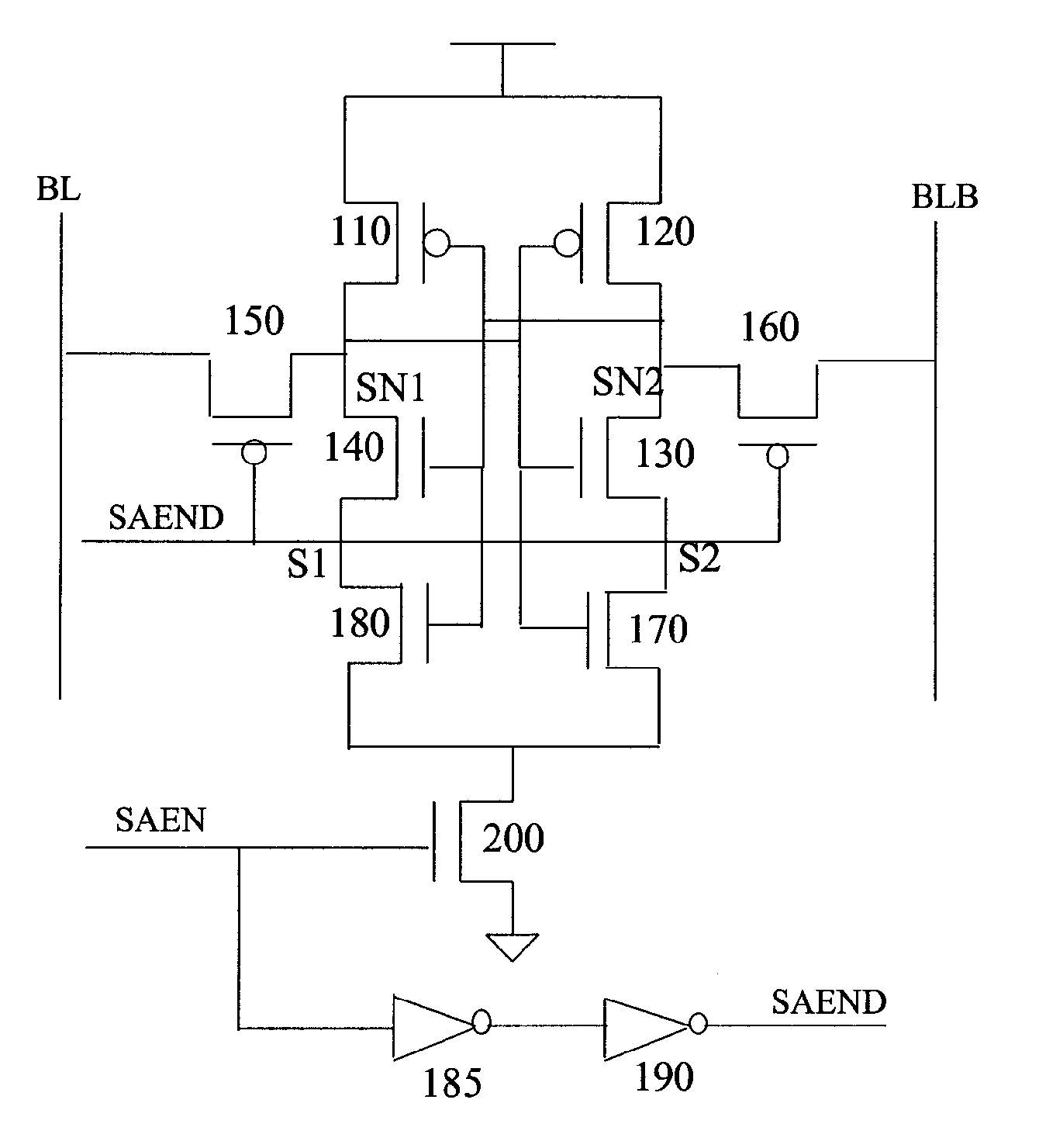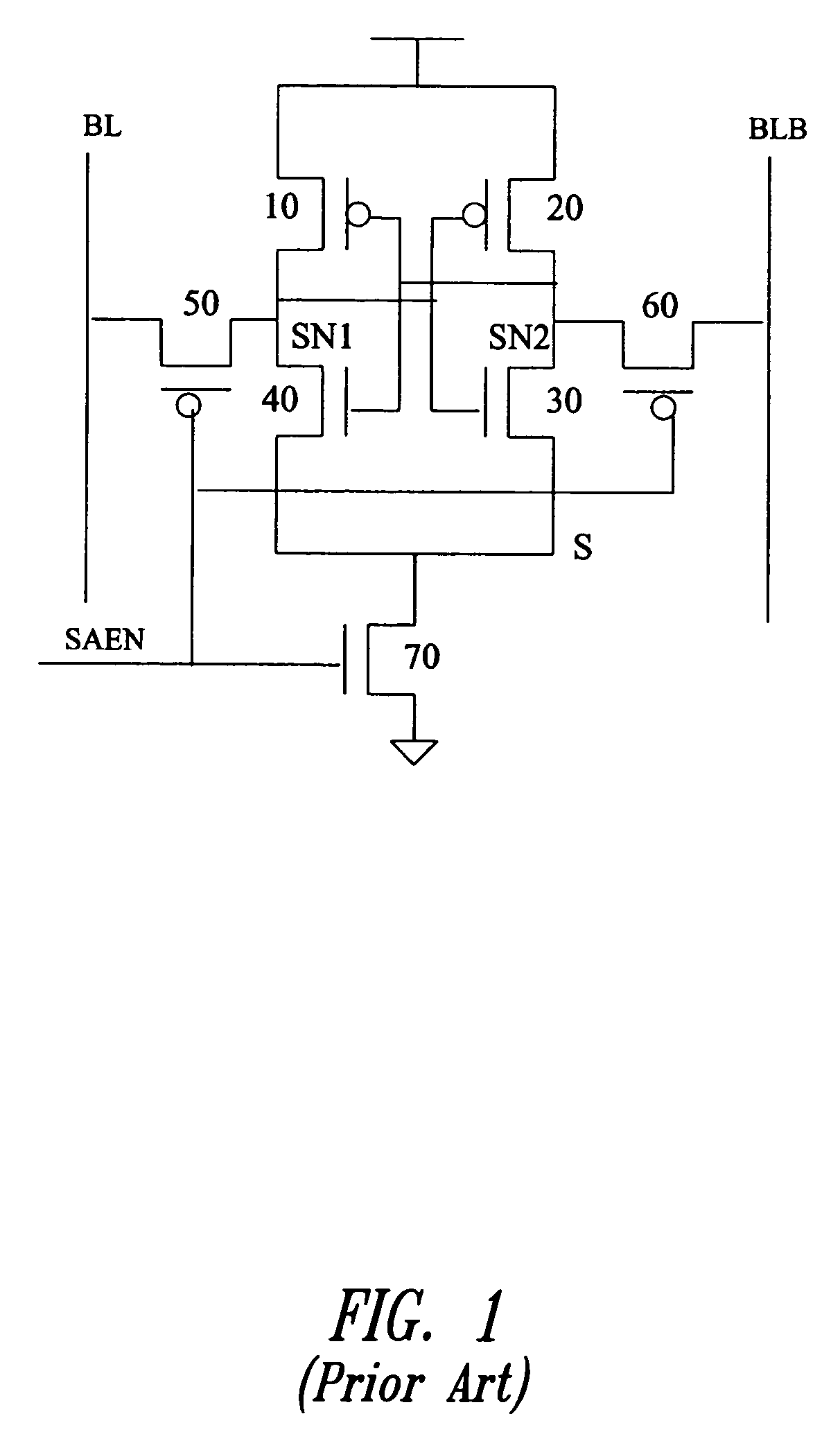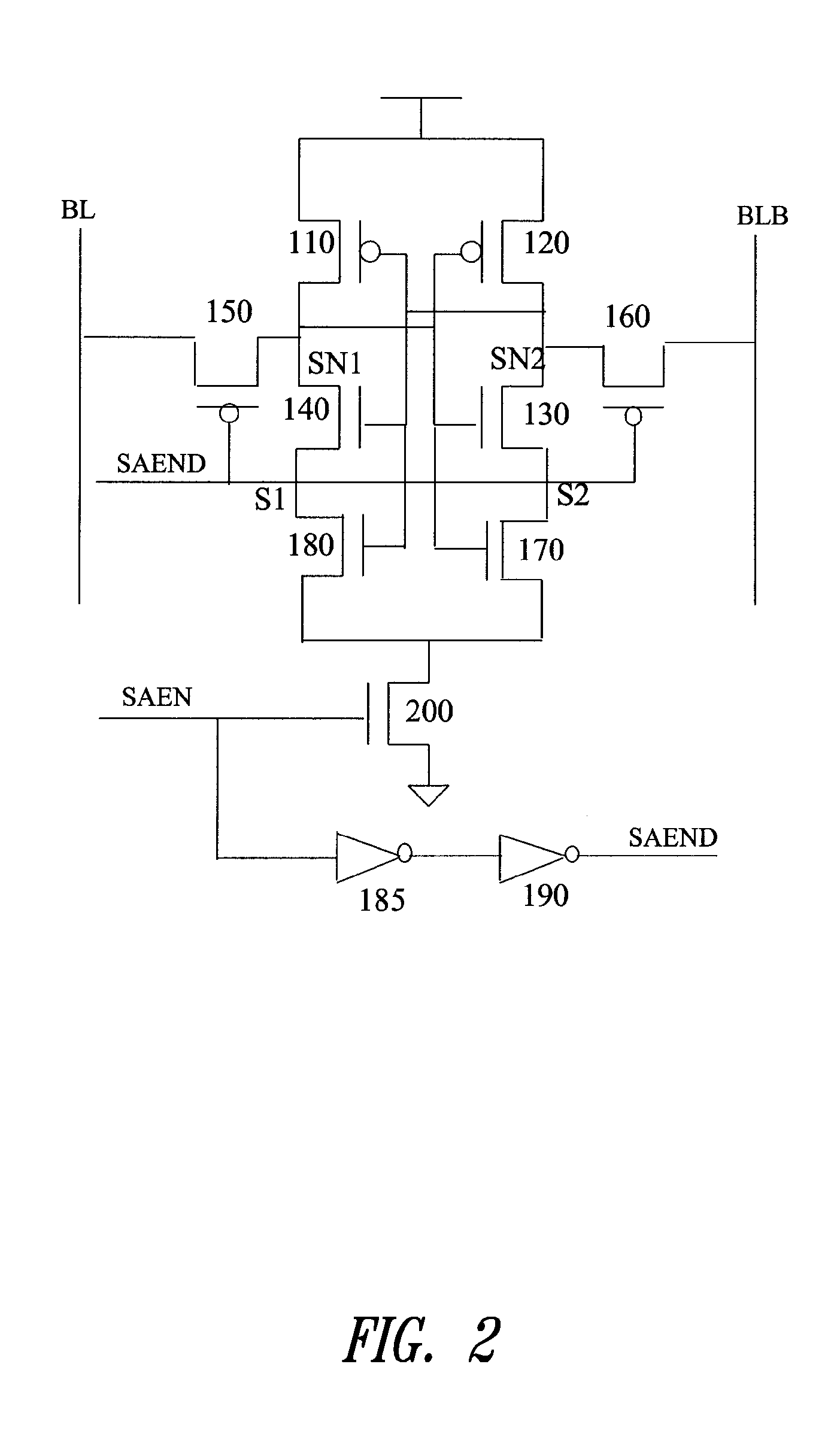Latch-type sense amplifier
a technology of latch-type sense amplifier and latch-type, which is applied in the direction of information storage, static storage, digital storage, etc., can solve the problems of capacitance imbalance, inability to provide reliable operation, and insufficient high reliability of conventional sense amplifiers, so as to reduce memory access times and high-speed memory cell operation
- Summary
- Abstract
- Description
- Claims
- Application Information
AI Technical Summary
Benefits of technology
Problems solved by technology
Method used
Image
Examples
Embodiment Construction
[0022]The disclosed embodiments of the present invention aim to overcome the above-mentioned problem of longer access times in memories by triggering the sense amplifier at a voltage split less than what is required in the conventional scheme. The improved circuit is able to achieve a substantial improvement of around 15–20% in reliability for sensing low voltages as compared to the conventional circuits. This improved reliability further results in achieving a significant access time improvement.
[0023]The circuit in FIG. 2 illustrates an improved latch-type sense amplifier as provided by the present invention. The circuit comprises a modified latch consisting of PMOS transistors 110, 120, NMOS transistors 130, 140, and an additional set of NMOS transistors 170, 180. The bit line BL is connected through a PMOS transistor 150 and the bit line BLB is connected through a PMOS transistor 160. The NMOS transistor 200, controlled by the SAEN signal, is used for coupling the latch to a sup...
PUM
 Login to View More
Login to View More Abstract
Description
Claims
Application Information
 Login to View More
Login to View More - R&D
- Intellectual Property
- Life Sciences
- Materials
- Tech Scout
- Unparalleled Data Quality
- Higher Quality Content
- 60% Fewer Hallucinations
Browse by: Latest US Patents, China's latest patents, Technical Efficacy Thesaurus, Application Domain, Technology Topic, Popular Technical Reports.
© 2025 PatSnap. All rights reserved.Legal|Privacy policy|Modern Slavery Act Transparency Statement|Sitemap|About US| Contact US: help@patsnap.com



